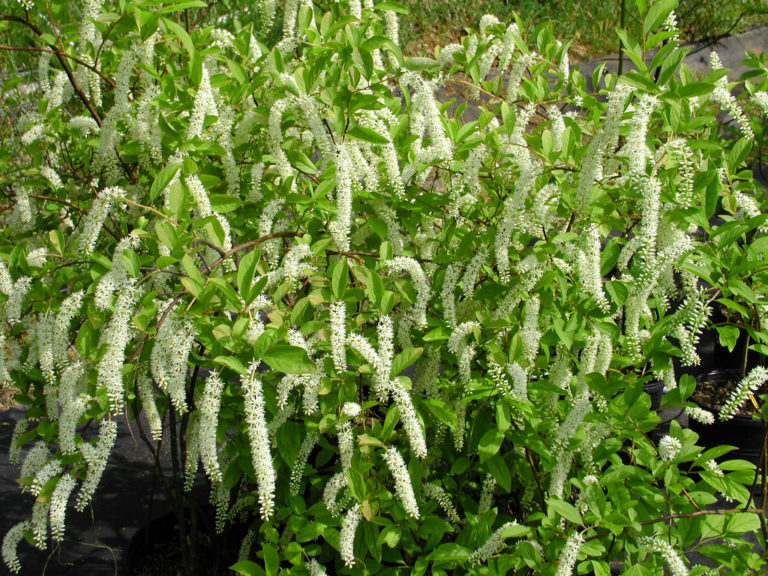Iteaceae is a family of only one genus of trees and shrubs, and of the 27 species in that genus, Itea is the only one found in the U.S. (the vast majority of the others being from east Asia). Virginia Sweetspire, as often known as Itea, is a versatile and lovely shrub which grows to 8 feet (more often to 6 feet), with abundant, deliciously aromatic 3-6″ – long bottlebrush-like flower spikes in early summer. These spikes dangle from slender branches and flower from the base towards the tip. Itea is popular because of those lovely flowers but also because it thrives in sun or shade, and in wet to average soil and is not fussy about pH. And not to be forgotten, the dark green leaves turn stunning shades of maroon to crimson in fall and can last into winter. The seed heads attract songbirds and its growth habit — spreading by root suckers (if allowed to) — provides nesting habitat for birds and cover for critters.
NURSERY HOURS
Wednesday: 10-4 Thursday: 10-6 Friday-Saturday: 10-4 Sunday: 12-4
Itea virginica

Key Info
Scientific Name: Itea virginica L.
Common Names: Virginia Sweetspire, Tassel-white, Itea, Virginia Willow
Family Names: Iteaceae (Itea Family)
Plant Type: Tree / Shrub
Leaf Retention: Evergreen in southern parts of its range
Flower Color: White
Special Characteristics: Suckering, Flowers fragrant, Good wildlife cover/habitat, Attracts bees, Attracts butterflies, Good fall color, Attracts birds, Tolerates wet conditions
Additional Info
Habit: Multi-stemmed shrub with slender, arching to upright, infrequently branched stems and medium-fine texture; peripheral suckering and colonizing habit. The root system is woody and develops underground runners, forming clonal offsets.
Height: up to 6'
Spread: up to 6'
Soil Conditions: Moist well drained to wet, acid soils, sandy, sandy loam, medium loam, clay loam, clay.
Leaves: Alternate, oblong, serrated, waxy green leaves (1½ - 3½ inches long x ½ - 1½ inches wide) occur on the smaller branches and young shoots, dark green and glabrous above, and paler and hairy below. These turn bright red and purple in fall and may remain through winter in Southern climates.
Flowers (or reproductive structures: Upper stems terminate in narrow racemes of creamy white flowers about 2-6 inches long. These racemes can be erect, ascending, or drooping. Individual 5-parted flowers are about 1/3 inch across, opening from the base of the raceme towards its tip. Flowering occurs from late spring to early summer, lasting about 3-4 weeks.
Fruit: The flowers are replaced by 2-celled seed capsules about ¼" long that are lance-shaped and becoming dark brown at maturity. The capsules split to release many tiny, flatttened, dark, shiny seeds.
Natural Distribution: Moist woods, swamps, wet pine barrens ; moist forests and thickets, especially along the banksof small streams.
USDA Hardiness Zone: 5 to 9
USDA Wetland Indicator Status in NC: OBL (FACW on coast)
Pollination: Bees, butterflies, other insects.
Wildlife Connections: Not much is known about Virginia Sweetspire's wildlife connections (Illinoisflowers.org). It is used as cover by many small mammals and birds.
Propagation: Virginia Sweetspire can be propagated easily from seed, from cuttings in springtime, or from division of root suckers.
